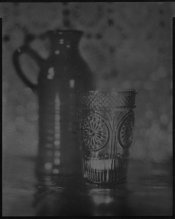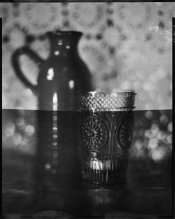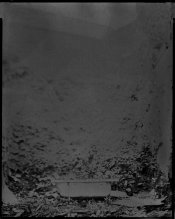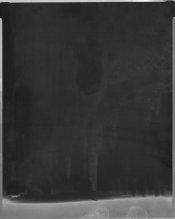mornin' all,
so after seeing Joe's video and also lamenting the current lack of Harman Direct Positive, I've also been experimenting with using peroxide bleach. My results so far have been mixed, but getting steadily worse..
I was originally hoping to use this process as a semi daylight process, so that I could use the second development in demonstration, and but the initial image, as you can see, ended up a little grey. Despite looking (in real life) pretty well exposed, I wasn't getting any white highlights. In the mean time Joe had figured out that he wasn't getting any whites because of overexposure on the second exposure..

great! so off I go with a new exposure to the darkroom, and just as expected by cutting down the second exposure I get some whites. Image 2 is a test image with 2 exposures (1 stop difference, but one is the same as in image rev1) and was processed in the darkroom and re-exposed under enlarger, f8 for 8 seconds.

and so now I'm thinking, this is great.. so off I go another new exposure, then back to the darkroom and with the same processing technique (re-exposure time) I look aghast at another grey image.

I've since tried fixing a couple variables I thought might have been the problem between image 2 and 3. New bleach, new dev, different exposure, but everything just kept coming up grey. And so today I tried a test print with different exposures (on the second exposure) and get this:

It hasn't even reversed has it?
I'm making progress of sorts, I guess, but now I'm a little unsure where to go from here. After Don's latest update I can now only think that not enough developing at the beginning is what's causing the problem, however my process has been consistent throughout - a little background on that, I'm using 8x10 Ilford Multigrade RC (shot at iso 1.5), Ilford Multigrade Dev 1:9, 12% peroxide (plus 1 tsps citric acid per 100mm). Bleaching seems to be working and paper is almost completely white before re-exposing. Everything is currently being done under safelight (which I also tested wasn't fogging the paper).
There have been a few more images than I've posted here, most are just slight variables of image 1 or 3, until today where I got nothing.
I'm not sure if this information is any good to anyone... maybe just as a cautionary tale of something, but of what tho', I'm unsure.
all the best,
Dafydd









 What's the big hurry?! Just kidding. I totally understand that not everybody wants to wait around for results.
What's the big hurry?! Just kidding. I totally understand that not everybody wants to wait around for results.
